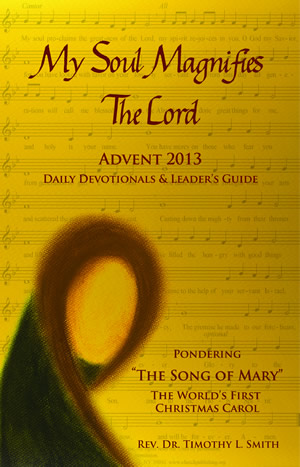
But the angel said to them, ‘Do not be afraid; for see—I am bringing you good news of great joy for all the people: to you is born this day in the city of David a Saviour, who is the Messiah, the Lord. This will be a sign for you: you will find a child wrapped in bands of cloth and lying in a manger.’ And suddenly there was with the angel a multitude of the heavenly host, praising God and saying, ‘Glory to God in the highest heaven, and on earth peace among those whom he favours!’ When the angels had left them and gone into heaven, the shepherds said to one another, ‘Let us go now to Bethlehem and see this thing that has taken place, which the Lord has made known to us.’ So they went with haste and found Mary and Joseph, and the child lying in the manger. When they saw this, they made known what had been told them about this child; and all who heard it were amazed at what the shepherds told them. But Mary treasured all these words and pondered them in her heart.
Luke 2:6-19
With all their worldly possessions strapped to their backs, a plainly dressed workman and a very pregnant teen slip unnoticed through the Bethlehem crowd. All the centuries of preparation, and the years of God’s working are about to be fulfilled in this: a Baby in a manger. Even Joseph and Mary must wonder at the way God is bringing His Son into the world. They know that God is doing something wonderful but do not fully understand His ways.
Tensions run high in Bethlehem, as the people are bitter at Caesar’s registration and Rome’s oppressive presence. The Roman soldiers standing on every corner and the taxman’s outstretched hand are hated reminders of enslavement to Rome. “Dagger men” (Latin: sicarri) are Jewish nationalists who lurk in crowds like these, poised to assassinate Roman officials, then vanish unseen in the throng.
While we do not know the exact day of Jesus’ birth, a December birthday is reasonable (Harold Hoehner, Chronological Aspects of the Life of Christ). The traditional date of Jesus’ birth as December 25 is ancient, going back as far as the writings of Hippolytus of Rome (A.D. 165-235), and Theophilus of Antioch (A.D. 171 – 183). Ancient authorities indicate that the sheep the shepherds tended on nearby hillsides were meant for sacrifice at the Passover in Jerusalem in the Spring (Mishnah, Shekalim 7:4).
There is no indication of a long search by Joseph and Mary for a place to spend the night, or hint of a heartless innkeeper who turned them out in the cold. It is likely that Joseph and Mary are staying with relatives or friends who lived in their hometown. Bible scholar Thomas Constable gives a good description of what was likely the setting for Jesus’ birth:
Most homes in Israel had two parts: one for the family and another for the household animals. It is possible that this other section was the location of the manger. An “inn” (Greek: katalyma) could have been a guest room in a house (cf. Luke 22:11-12), or any place of lodging. This Greek word has a wider range of meanings than pandocheion, which refers to an inn for travelers (cf. Luke 10:34) (Bible Study and Notes: Luke).
In the average first century Judean home the animals and family shared one large living space. The space was divided so that animals slept on a lower level and the family slept on a floor raised about three feet higher. There was a manger, a feeding trough for animals, between the two living spaces. Mary likely gave birth to the Son of God in the family living space that was probably crowded with out of town guests. She then placed Baby Jesus in the nearby manger.
God makes no pretense or show in coming to us, but identifies in the humblest of ways with those He made in His image. He makes a feeding trough His first throne. He bends low to enter His creation. He comes as Isaiah had long ago foretold, Immanuel, “God-with-us”.
It is in keeping with God’s character and regard for the lowly that shepherds are the first to hear about Messiah’s birth. It is shepherds who were not permitted to give testimony in any courtroom whom God chooses to bear witness to His Son’s birth.
Heaven’s angels soar past Rome and Jerusalem, past Caesar and King Herod to bring God’s Good News to lowly shepherds. It is just as Mary’s Song had celebrated: God has “lifted up the lowly; he has filled the hungry with good things”.
The shepherds raced to Bethlehem amazed that God would come to the likes of them. Excitedly they knocked on doors in the middle of the night searching for a Baby lying in a manger. There might be other newborn babies in a little place like Bethlehem, but none but one lying in a manger!
When the shepherds found God’s Son, there was no halo around His head, and contrary to the Christmas carol, the Baby did cry. What the shepherds saw was a red, wrinkled, newborn human baby. That He was fully human was clear to them. But the angel told them that He was “a Saviour, who is the Messiah, the Lord”. The Son of God did not descend from the sky, but entered the human race in the same way as you and me. Christ the Lord took on our full humanity that He might become our Savior.
The shepherds knelt in awe before the Baby and worshipped God’s amazing Grace lying in a manger. They realized that God’s Good News excluded no one. They retraced their steps through Bethlehem, knocking on doors to bring everyone up to date on what they had seen. Luke tells us that, “all who heard it were amazed at what the shepherds told them”.
Joseph and Mary were surely surprised by the shepherds’ nighttime visit and their report of the angel choir. While all who heard were amazed, Mary, in some special way, “treasured all these words and pondered them in her heart”.
What deep thoughts the mother of our Lord must have had, and they are hers alone. Some of her ponderings we find in Mary’s Song. She sets for us the example of treasuring each word and pondering God’s wondrous love for us.
In a Christmas Day sermon Martin Luther asked today’s pressing, important question:
“Of what benefit would it be to me if Christ had been born a thousand times, and it would daily be sung into my ears in a most lovely manner, if I were never to hear that he was born for me and was to be my very own?”
Treasure and ponder the angel’s announcement: “To you is born this day in the city of David a Saviour, who is the Messiah, the Lord.”
PONDERING
Mary shows herself to be a reflective person who treasures and ponders throughout Jesus’ life: “Jesus’ mother treasured all these things in her heart” (Luke 2:51). In practical ways, how might Mary be an example for us in pondering and treasuring the story of Jesus?
Take a few moments to go back and reread Mary’s Song in the light of Christmas Day. What stands out to you today as you ponder Mary’s Song? What do you see as key themes in Mary’s Song?
How has pondering Mary’s Song changed your life? How does it change your outlook for the New Year?



